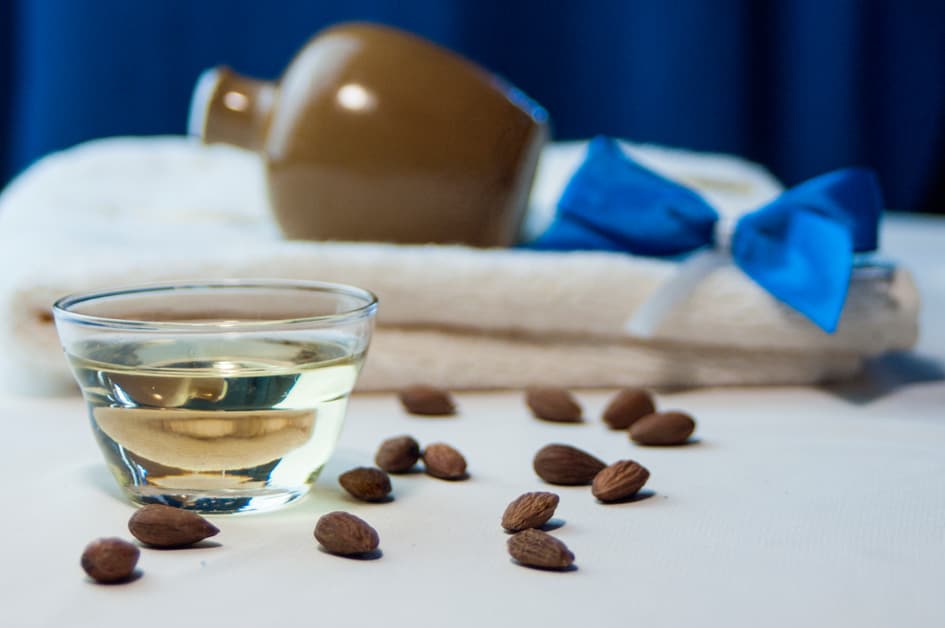Introduction
Aromatherapy is a type of alternative medicine. It uses essential oils from plants to benefit physical, mental, and emotional health. People have used it to help ease knee arthritis pain. Let’s learn about aromatherapy and the science that explains why it works for pain.
You can use aromatherapy to reduce the pain of knee arthritis.
Definition of Aromatherapy
Aromatherapy is an alternative treatment that uses essential oils, aroma compounds and other aromatic plant extracts to boost physical, psychological and emotional well-being. The oils are usually obtained from plants through steam distillation or pressing and can be mixed with carrier oils such as jojoba oil or coconut oil.
Aromatherapy can be used for a wide range of problems, including knee arthritis pain.
Research shows essential oils have natural anti-inflammatory and pain-reducing properties that can help reduce pain from knee arthritis. Regular use of certain essential oils over several weeks has been found to reduce joint swelling and improve joint mobility. Plus, it may help reduce anxiety and improve sleep quality in individuals with chronic knee arthritis pain.
Aromatherapy may be combined with other treatments like massage or heat therapy to further ease pain. By combining the right essential oils with massage targeted at arthritic areas, you may be able to boost the effects of both treatments.
Lavender oil, geranium oil, roman chamomile oil and eucalyptus oil are some of the essential oils studied for their potential to reduce arthritic pain. No single blend or essential oil works best for everyone – so experiment with different combinations until you find the one that works for you!
Benefits of Aromatherapy
Aromatherapy is an alternate medicine. It uses essential oils to enhance health and well-being. These oils are concentrated plant extracts. They are obtained through distillation for cosmetics, flavorings, fragrances and medicinal uses.
Inhaling or topical application of these oils can have many benefits. These include:
- Reducing stress and anxiety
- Relieving muscle pain
- Boosting energy levels
- Helping with depression
- Improving cognitive function
- Decreasing insomnia
- Promoting emotional balance
Aromatherapy has been used for centuries by different cultures. Studies suggest it can reduce inflammation and improve brain performance and memory. It may also aid digestion due to its ability to stimulate digestive enzymes. Aromatic molecules can also stimulate protective immune responses such as white blood cell production. This helps protect against bacteria and viruses.
Essential Oils for Knee Arthritis Pain
Aromatherapy is an alternative form of medicine. It involves the use of essential oils to improve health and wellbeing. Massage and inhalation are two ways to use essential oils. They can also help people with knee arthritis pain. This is because they may reduce pain and swelling.
In this article, we’ll look at how aromatherapy can help with knee arthritis pain:
Peppermint Oil
Peppermint oil is a popular choice for knee arthritis relief. It is cooling, calming and anti-inflammatory due to its menthol content. Plus, it has substances that act as analgesics – providing pain relief. To use peppermint oil:
- Apply a few drops directly to the affected zone using a carrier oil such as coconut or jojoba.
- For an added bonus, add several drops to an aromatherapy diffuser. Inhale the steam and the peppermint scent. This may reduce stress and tension in your body, thus reducing knee inflammation and pain.
Lavender Oil
Lavender oil has been used for centuries for its therapeutic properties. It has calming, sedating, and pleasant scent effects. As part of aromatherapy, it can reduce knee arthritis pain.
When applied to skin, it creates a warming sensation reducing swelling and pain. It also relaxes ankle muscles which are often linked with arthritis pain in the knee joints. Lavender helps with better sleep, providing a calmer environment for the body to heal.
Inhalation therapy is another way to use lavender oil. A diffuser or an aromatherapy mask can be used for this. Diffusers disperse essential oils in small particles throughout a space. Aromatherapy masks deliver concentrated doses of essential oils directly into nasal passages. This gives users control over scent intensity and pleasure.
Eucalyptus Oil
Eucalyptus oil has many healing properties and has been used for a long time. Studies have shown it can help ease knee arthritis pain. The primary ingredient, 1,8 cineole, has anti-inflammatory properties which can reduce inflammation-related pain. Additionally, it can help heal faster by increasing the production of cytokines and matrix proteins.
You can use this essential oil in various ways, such as aromatherapy, topical application or ingestion. Start with the lowest dose and slowly increase it depending on the effect. When using it topically or aromatically, make sure you’re informed of how to use it and its risks. This will ensure you get the most out of your healing without any unwanted side effects.
Rosemary Oil
Rosemary oil is obtained by steam distilling the rosemary plant. It can help people with knee arthritis pain. It has warming and anti-inflammatory qualities, which reduce swelling and muscle stress. This allows a greater range of motion and less downtime due to illness or injury. The aroma of rosemary is also soothing.
It has antiseptic and antifungal properties. It is helpful for open wounds, and recovery from knee arthritis pain and other injuries involving the knee.
When using essential oils for knee arthritis, dilute them with a carrier oil before applying on the skin. You can also add a few drops into your bathwater or combine them with unscented lotion. Rosemary essential oils can provide support for knee arthritis and other inflammation-related conditions.
How to Use Essential Oils for Knee Arthritis Pain
Aromatherapy – a great way to help manage knee arthritis pain. Essential oils can reduce inflammation, without medications. What oils should be used? This article will explain them and provide tips on how to use them. Maximum effect? Achieve it with essential oils!
Massage
Massaging your knee is a popular way to use essential oils for knee arthritis pain. Move in circles or sideways from the knee joint to the abdomen, several times a day. Start light and increase pressure as you feel comfortable.
Mix 1 tablespoon of a carrier oil like coconut, almond or olive oil with 4-6 drops of an essential oil like lavender, chamomile, ylang ylang, geranium or peppermint. Apply it to the painful area with gentle massaging strokes.
The following essential oils can help with knee arthritis pain:
- Lavender can de-stress tense muscles and reduce irritability.
- Chamomile can reduce swelling.
- Ylang Ylang improves circulation.
- Geranium promotes healing.
- Peppermint cools and soothes heat and headaches.
Topical Application
Essential oils are a safe and economical way to reduce joint inflammation and pain. Knee arthritis is an ideal candidate for this treatment because of the large surface area. Applying essential oils topically is beneficial as it offers localized benefits like pain relief, swelling reduction, and stiffness relief.
Be sure to use clean hands when applying and don’t apply if there is an open wound. You can make an arthritis relief blend with eucalyptus, rosemary, peppermint, lavender, frankincense, and tea tree oil. Lavender helps relax muscles, eucalyptus has anti-inflammatory properties, tea tree is antiseptic, and peppermint has menthol for pain relief and swelling.
Mix 5-10 drops of your blend in a carrier oil such as olive, almond, or coconut oil. Apply it to the affected area, and cover it with a bandage or cloth, if desired. Leave it overnight or until irritation sets in, then repeat when needed.
Diffusion
Essential oils can be used in multiple ways. Applying them to the skin, inhaling them directly, or diffusing them using a diffuser are some examples. Diffusing essential oils is one of the most popular methods. It’s easy and provides therapeutic benefits.
The diffused oils interact with tiny receptors inside the nose. This sends signals to the brain. It can reduce physical discomfort and provide mental clarity.
Frankincense, wintergreen, lavender, black pepper, marjoram and ginger are some essential oils that can help with knee arthritis pain. They reduce inflammation in muscles, cartilage and tissue. Only therapeutic grade essential oils should be used for diffusion. These are safe for inhalation.
Safety Considerations
Aromatherapy is usually safe, however there are a few things to keep in mind when using essential oils to ease knee arthritis pain. Dilute the oils, don’t let them come into contact with skin, and avoid use during pregnancy.
Let’s explore other safety considerations for aromatherapy and knee arthritis:
Dilution
It is key to make sure essential oils are diluted before use. A dilution of no more than 2-5% is suggested. This means for every 20 drops of essential oil, use 400-900 drops of a carrier oil such as almond or coconut oil (roughly 3-8 tablespoons). Experimenting with different dilutions and reading labels is recommended.
Also, essential oils can be diffused using an aromatherapy diffuser. However, caution is urged when using a nebulizing or ultrasonic diffuser. These disperse undiluted essential oils without using water or carrier oil, which can cause skin irritation or other side effects if inhaled in large amounts. To avoid this, choose a diffuser carefully.
For more detailed advice, consult a qualified aromatherapy practitioner.
Skin Sensitivity
It is essential to understand potential skin and irritation sensitivities when using essential oils topically. Every individual has a different chemical makeup, so reactions may vary.
To test, mix 1-3 drops of the oil with carrier oil, then apply a small amount on a piece of cotton or gauze and place it on the inner arm near the elbow for 24 hours. If there is no reaction, it is safe to use the oil elsewhere.
When using essential oils on areas affected by arthritis due to inflammation, reduce the strength to 9-15%, depending on one’s sensitivity. Use carrier oils such as grapeseed oil or sweet almond. Remember that some drugs interact with some oils. Therefore, assess potential drug interactions before starting any aromatherapy treatment. The dilution range should be 0-2%.
Avoiding Eye Contact
When using aromatherapy for knee arthritis pain, keep in mind that essential oils contain chemicals which can be irritating. Observe safety rules to protect the eyes:
- Avoid any direct contact between essential oils and eyes. If any essential oil comes in contact with eyes, rinse immediately with cool water for 15 minutes and seek medical advice.
- Wear protective eyewear when applying aromatherapy treatments near face.
- Do not apply concentrations too close to eyes which may transfer from skin.
- Never ingest any form of essential oil unless under professional supervision of a qualified practitioner.
Conclusion
To wrap up, aromatherapy offers lots of possibilities when it comes to relieving knee arthritis pain. Essential oils can improve blood flow, decrease inflammation and muscle spasms, and give a calming effect. This could lead to better physical and mental health.
When used together with standard medical treatments and a healthy diet full of fruits, vegetables, whole grains and lean meats, essential oils can make living with knee arthritis more manageable.
Frequently Asked Questions
Q: What is aromatherapy?
A: Aromatherapy is a holistic practice that uses essential oils extracted from plants to improve physical and emotional well-being. It is believed that different essential oils have different healing properties, which can be used to treat various conditions, including knee arthritis pain.
Q: How does aromatherapy help with knee arthritis pain?
A: Aromatherapy is believed to help reduce the pain and inflammation associated with knee arthritis. Certain essential oils, like chamomile, lavender, or peppermint, can be applied topically to the affected area and massaged in, or they can be used in a diffuser to help reduce stress and tension that can contribute to the pain.
Q: Are there any side effects associated with aromatherapy?
A: Aromatherapy is generally considered safe, but it is important to use caution when using essential oils, as some people may be allergic to certain oils. It is also important to use only pure essential oils, as some products may contain additives or synthetic ingredients that can cause irritation or other adverse reactions.





